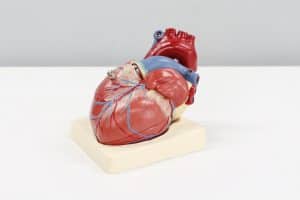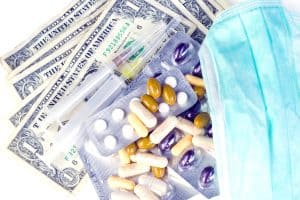
Top 5 reasons for a Class I product recall
pharmafile | April 21, 2011 | Feature | Manufacturing and Production | Johnson & Johnson, product recalls
Having to recall a pharmaceutical product because of a major quality defect or safety issue is a heart sinking moment for a drugmaker.
Even where patient safety is not at stake, a recall is an expensive undertaking, not only in direct costs but also damage to reputation and the risk of litigation.
The direct cost of conducting a recall, replacing the affected product and handling associated litigation is generally thought to be in the order of millions of dollars, although studies have suggested that the decline in shareholder value could be as much as 12 times that amount.
In this article we look at the major recall events of the last three years or so, to try to identify which quality defects are the most likely to spark a Class I recall – problems with a medicine which could potentially cause adverse health consequences or death.
Our analysis reviews the reasons given of recall events cited by the FDA and involving prescription and over-the-counter medicines in 2010 (to date), 2009 and 2008.
In FDA parlance, ‘a recall event’ can include multiple product recalls.
It should be emphasised that the reason cited in a recall report may not reflect the root cause of an event, as establishing this generally requires the manufacturer to bring an investigation into the incident to a close.
That disclaimer in mind, here are our top five reasons based on publicly-available FDA notices:
1) Super or sub-potent formulations
Coming in at number one on our listing by some margin were formulation failures resulting in the inclusion of too much active pharmaceutical ingredient (API) in a medicinal product. Many of these incidents clustered in the latter half of 2008 and early 2009, and typically were caused by manufacturing defects which resulted in pills which were over or undersized.
The variations in size meant that patients were at risk of getting too little or too much of an active pharmaceutical ingredient (API). One example was Actavis, which was forced to recall its digoxin tablets Digitek in 2008 because the pills were thought to have been manufactured to a double thickness, which would mean they contained twice the approved level of active ingredient.
KV Pharmaceuticals and its subsidiary Ethex Corp. announced a recall of their morphine pills in November 2008 after it was found the pills were double-sized and might contain dangerous double-doses of morphine.
Matters escalated in March 2009 when the FDA ruled that KV had made and distributed adulterated and unapproved drugs. It then put a legal injunction on the company, preventing it from manufacturing and shipping drugs until the firm obtains FDA approval.
In March 2010, the company agreed to pay $27.6 million in fines and restitution and closed its Ethex Corp. generic business after pleading guilty to criminal charges for allegedly misbranding and adulterating drugs, and for not disclosing that its painkiller tablets were oversized.
The Department of Justice commented on the ruling: “Even though they were aware of serious manufacturing problems concerning their oversized drugs, Ethex failed to notify the FDA as required by law,” said Assistant Attorney General Tony West, who heads the Justice Department’s Civil Division. “The Justice Department will vigorously prosecute those who pursue profits at the expense of consumer safety.”
Other cases include recalls of barbiturates, blood pressure medications, where the potential for patient harm is clearly considerable. Dozens of lawsuits have been filed against the drugmakers which recalled the products and in one case the pharmaceutical company was shut down.
2) Particulate contamination
Number two in our top five is contamination with particulate matter, a group which we have combined to include all cases where the contamination has come from inorganic materials such as glass, silicone and stainless steel.
This form of contamination tends to occur as a result of wear and tear on pharmaceutical processing machinery, sloughing off of layers in the glass used to manufacture vials and other containers, or abrasion of stoppers and plungers.
Glass contamination can also occur if the wrong sort of container is used to store highly acidic or basic solutions.
Most pharmaceutical products are specified to be essentially free of visible particles, and there are strict limits on the number of subvisible particles allowed. Small particles are a particular concern because if taken into the body, they have the potential to lodge in tissues and cause an inflammatory response or other adverse reactions.
If injected into the blood the consequences could include damage to blood vessels which could potentially lead to serious organ damage and even death. Subcutaneous injection can lead to include foreign body granuloma, local injection site reactions, and increased immunogenicity.
One of the most recent and high profile cases is the recall of cancer treatment Velcade because of particle contamination in vials of the drug.
The drug has been recalled in North America, Europe and Asia after particles were seen in the solution after the drug has been reconstituted before administering it to a patient.
The drug is co-marketed by Takeda, Millenium and Janssen. A fix to the problem is already being developed.
The contaminant is believed to be a white polyester-like material which originated from a filtration system.
3) Contamination of APIs
No prizes for guessing which incident led to the inclusion of API contamination at number three in our list – all relate to the contamination of bulk heparin sourced from China in 2008.
The contaminant in question was oversulphated chondroitin sulphate (OSCS), and more than 80 recorded deaths were attributed to it in the US alone.
While most of the other cases in our top five were caused by failures in Good Manufacturing Practice, the FDA’s assertions that the contamination in this incident was deliberate and economically-motivated, makes it the most sinister and alarming entry.
The FDA believes the heparin API was laced with OSCS to fool drugmaker’s quality control procedures.
In 2008 a swine shortage in Asia made pig intestines – the raw material from which bulk heparin is extracted – scarce.
The OSCS contaminant was indistinguishable from heparin using the standard identity testing recommended at the time.
The problems rumble on, with B. Braun Medical recalling some of its heparin products in the US in October 2010 after another incident involving contamination of the API.
The company announced the recall after being notified by its supplier – Scientific Protein Laboratories – that the heparin API had higher-than-permitted levels of (OSCSC).
SPL was recently cited by the FDA for failing to follow-up a customer complaint about an OSCS-contaminated batch of heparin API received in October 2008, quickly enough.
4) Sterility failure in injectable products
Some of the greatest challenges in pharmaceutical manufacturing come when the product being made must be sterile, and so it is no surprise that sterility failure of injectables came in at number four in our list.
The issue would have ranked even higher had we included medical devices in our analysis. Non-sterility of a product administered intravenously can result in infections, which could be fatal.
Intravenous antibiotics, cancer drugs and migraine products all featured in recalls for potential sterility failure in 2008-2010. Meanwhile, failing to make the top five but still a major contender, was contamination of non-sterile dosage forms with microbes.
While fairly innocuous in most cases, there have been instances of contamination with hazardous species such as Bacillus cepacia, which can present a life-threatening health risk in susceptible populations such as those with immune deficiency, cystic fibrosis or tuberculosis.
5) Contamination with TBA
A flurry of incidents in 2009 and 2010 in which patients complained of a musty smell when medicine bottles were opened, brought contamination with 2, 4, 6-tribromoanisole (TBA) into the top five ranking.
TBA is a pesticide with fire-retardant properties, but is also a volatile contaminant. It has been implicated in the tainting of food since the 1960s, but has only recently emerged as a potential contaminant of pharmaceuticals.
There have been numerous incidences in the pharma supply chain, and the most notable is of course the string of recalls by Johnson & Johnson’s consumer health unit McNeil in 2009 and 2010.
The scale of J&J’s recall is remarkable; the ‘musty smell’ problem resulted in the company recalling a total of 53 million bottles of Tylenol, Benadryl and St. Joseph’s Aspirin.
TBA contamination was traced to plastic bottles and ultimately, to wood treated with a halogenated phenolic preservative which was used to manufacture pallets on which the bottles were stored.
The levels of TBA observed in bottles were deemed to be too small to cause adverse events in patients by the manufacturers involved in the cases, but a recent report by the Institute for Safe Medication Practices (ISMP) in the US – said that adverse events had been reported among patients using the products, and a ‘complete and thorough’ probe was warranted.
Pfizer hit similar problems with TBA in October 2010 when it recalled large batches of Lipitor. In a statement, Pfizer said the smell was consistent with TBA which was “found at a very low level” in a complaint sample bottle during the investigation.
Pfizer also said its policy is to prohibit the use of pallets made using TBA-treated wood in shipping of its products, and that it plans to start requiring bottle manufacturers to switch to plastic pallets instead of wood to prevent the problem recurring.
Aside from our top five, the 2008-2010 recall tally also included cases of: theft (where a break in the chain of custody meant that the integrity of the product could not be guaranteed); labelling errors; manufacturing defects; unapproved medicines; and crystallisation of the API in liquid formulations.
(Dis)honourable mention for dietary supplements
There are also some interesting trends to note outside our analysis.
For example, if the scope is broadened to include parapharmaceuticals such as dietary supplements, the number one reason for a Class I recall would be the inclusion of an unapproved ingredient in a product, generally an undeclared API.
In many of these cases the offending products were dietary supplements for male potency, claiming to be herbal but in fact containing undeclared actives such as sildenafil and tadalafil. Including supplements in the analysis, the next most common reasons for a Class I recall were presence of particulate matter in liquid products – such as eyedrops, non-sterility or contamination with a microorganism, super or sub-potency, and reporting of an adverse event.
Phil Taylor
Related Content

Johnson & Johnson to acquire Shockwave Medical
Johnson & Johnson (J&J) and Shockwave Medical have announced that they have entered into a …

FDA approves J&J’s Opsynvi for PAH treatment
Johnson & Johnson (J&J) has announced that the US Food and Drug Administration (FDA) has …

Johnson & Johnson acquires Ambrx Biopharma for approximately $2bn
Johnson & Johnson (J&J) has announced that it has successfully completed its acquisition of Ambrx …








